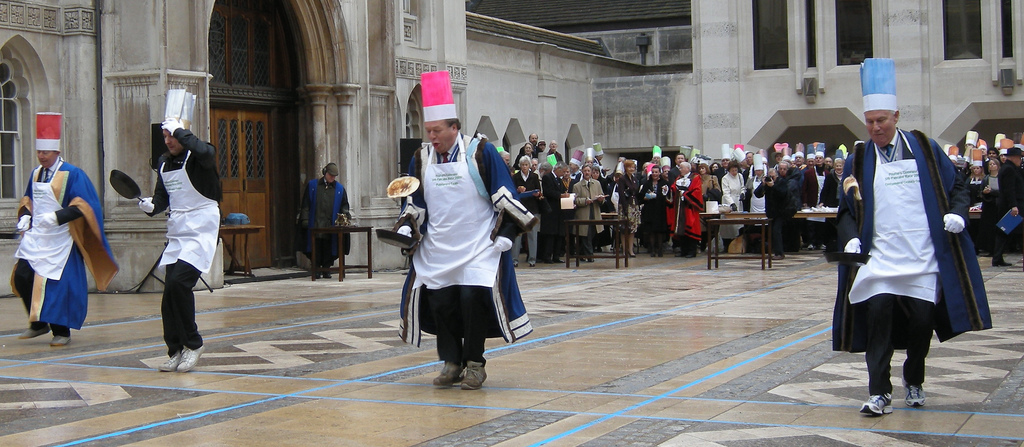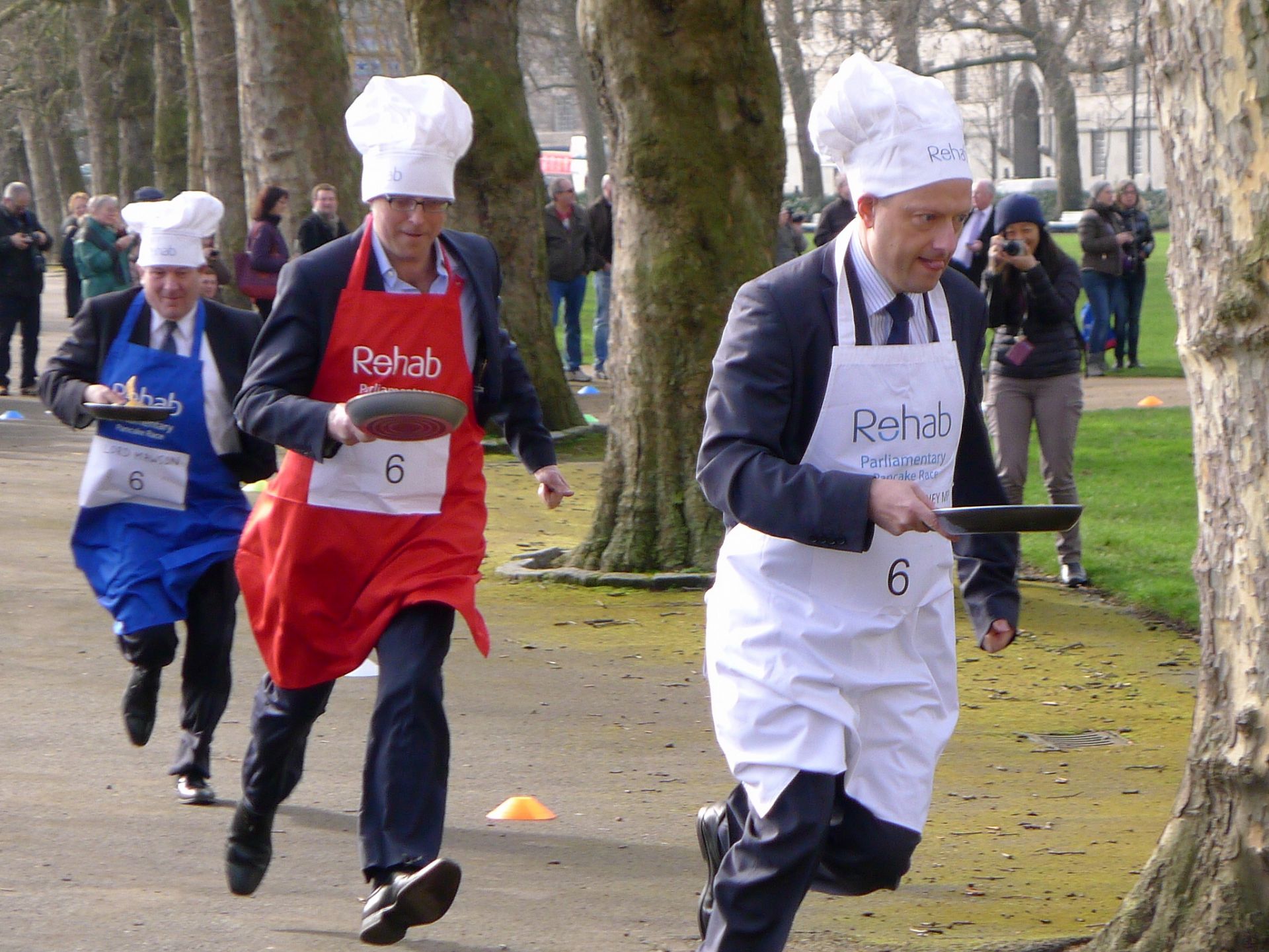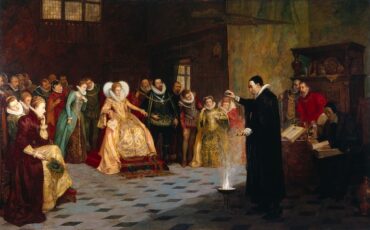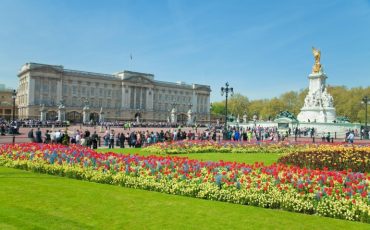If you are looking for a quintessentially British event in February, then you must witness Pancake Day racing. The old religious festival of Shrove Tuesday is when Christians ate a rich meal using butter and sugar before beginning the fast of Lent. This day always falls 47 days before Easter Sunday, so the date varies yearly and falls between February 3 and March 9. This year, Shrove Tuesday will take place on Tuesday, 13th February.
As part of Shrove Tuesday festivities, there are usually pancake races, which are thought to have begun in 1445. The story goes that a woman in Olney, Buckinghamshire, lost track of time while cooking on Shrove Tuesday, and when she heard the church bells ringing, she ran out of her house to the church carrying the frying pan. Whether this story is true or just folklore passed down from one generation to the next, pancake races are firmly a part of Shrove Tuesday throughout England.

City workers during the 2009 Pancake Day Race in Guildhard Yard. Photo: ©Martin Deutsch.
The object of a pancake race is to run while holding your frying pan and flipping the pancake in the air as you go and there are many held throughout the city of London. Below are some of the more popular ones to watch.
- Better Bankside Pancake Day Race– from 12.00 to 2:00 pm at Marlborough Sports Garden, teams will compete in pancake races while raising money for The Manna Society, a local charity that runs a day centre providing food, showers, clothing, and medical care.
- Greenwich Market Pancake Day Race – from 11 am to 4.30 pm, the public, alongside Greenwich Market traders, will compete in races while flipping pancakes in frying pans. Funds are being raised for the Greenwich and Bexley Community Hospice.
- Inter-Livery Pancake Day Race – at 12:00, teams wearing either fancy dress or full regalia will race around the Guildhall Yard tossing their pancakes, and the victors receive, fittingly, frying pans as well as a trophy. This event is organized by the Worshipful Company of Poulters.
- Leadenhall Market Pancake Race– at 12:30 pm at Lamb Tavern, teams of four will compete for glory during a 20m flipping relay on the Victorian covered Market’s ancient cobblestones.

Lord Mawson, Journalist Nick Robinson & Jason McCartney MP during the 2014 Pancake Day Race near House of Parliament. Photo: ©Martin Deutsch.







Leave a Reply